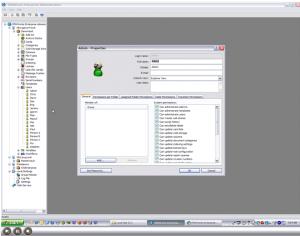
This is my first blog post so bear with me as I adjust to this new communication form. I thought of starting with the basics, so why not Product Data Management (PDM) basics?
Product Data Management (PDM)
Everyone creates and consumes more data today that at any point in our history. We each experience the frustration of not findining that letter, presentation, email or part file we need on a daily basis. The basics of Product Data Management (PDM) provide the tools to help organize your data and find your co-workers data as well.
Vault
In order to provide a centralized and secure location for all important data related to your product, PDM provides a Vault, similar to a shared network drive, where all data can be stored and shared. In order to prevent data overwrites, where one person accidentally destroys another persons data, the concept of Check Out and Check In are introduced. You can’t edit a file without Checking it Out and this lets others know that this file is out for use. In a way, it is like the library, where only one user can have a particular book at a given time.
Data Cards
Each file in the vault is associated with a data card that contains information about that file. This data can include Custom Properties, which can automatically populate the data cards or can be additional data. In the case of a manufactured part, perhaps you want to associate data such as description, part number, cost, vendor and material. This data can be customized and changed at any time.
Version Control
Each time a user checks a document back into the Vault, it’s versioned. This means a new copy is stored and a data field called version is automatically incremented. This provides a new level of safety and backup, in that you can go back in time multiple steps without having to do a Save As and manage multiple file names.
Search
Even a one person CAD department can benefit from the search tools available with a PDM system. Not only can you search on the file name, but any of the data fields that were entered as Custom Properties or additional data fields can be searched on in a variety of ways. The ability to find documents more quickly and easily is one of the compelling advantages of PDM for small and large organizations alike, as studies show that we spend up to 30% of each week, just searching for information!
Conclusion
While PDM systems can solve a variety of communication, collaboration and control challenges for manufacturing organizations today, the basics of PDM can help virtually every CAD user by centralizing, backing up, protecting and finding your valuable data.
Come and learn more about PDM at SolidWorks World in February!
Rich Allen,
Product Manager for PDM
DS SolidWorks Corp.












